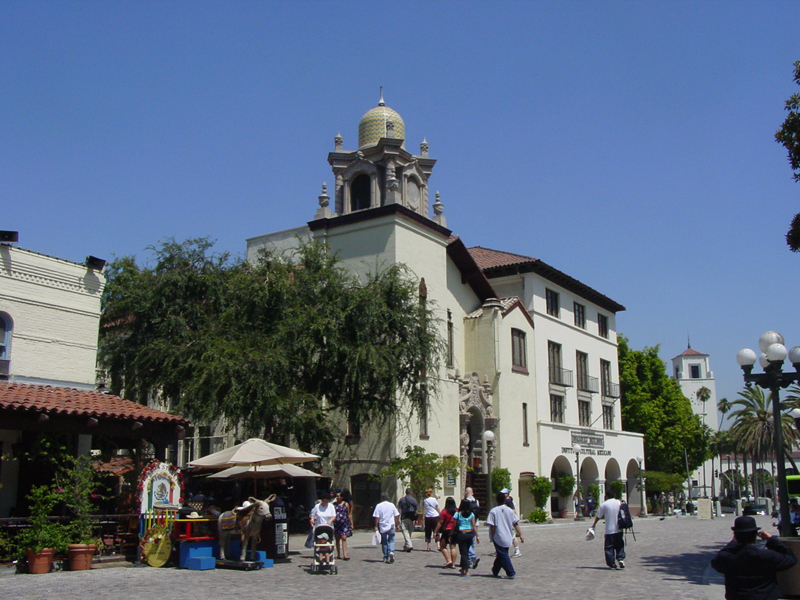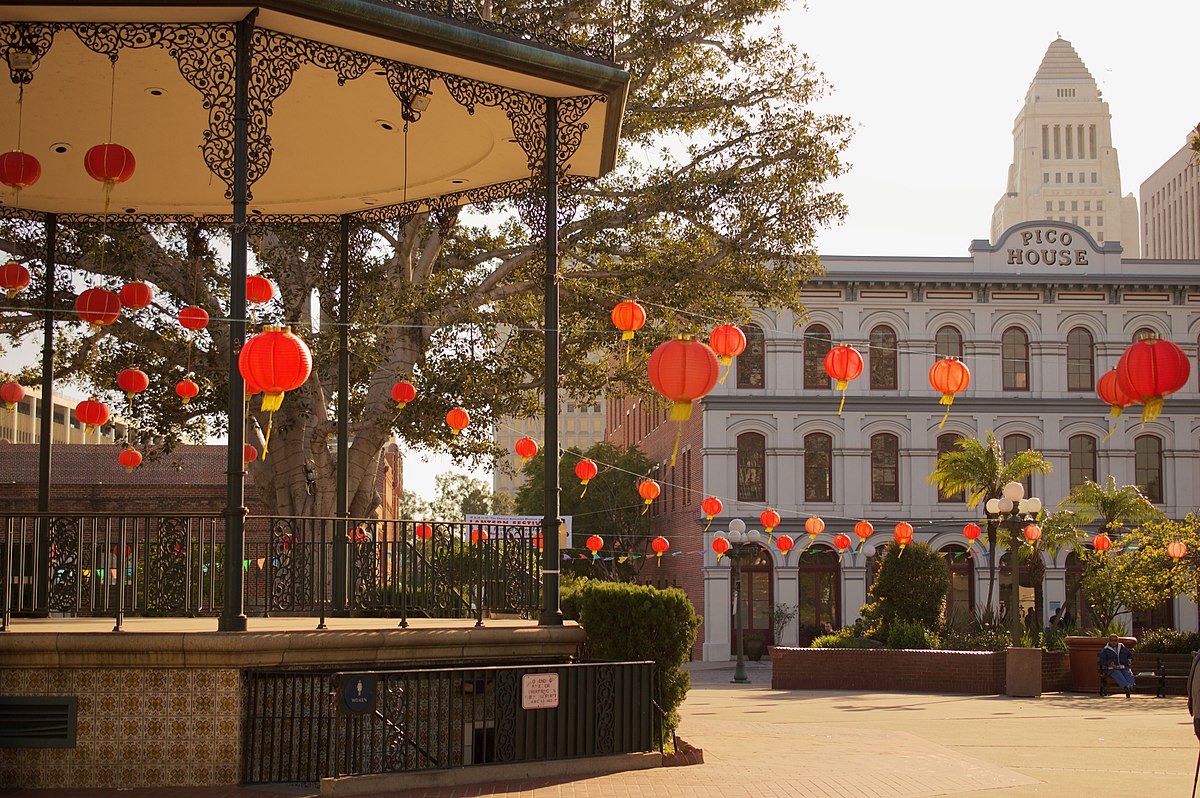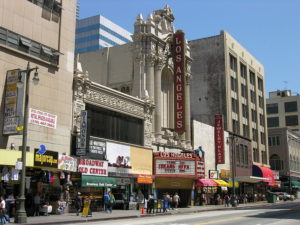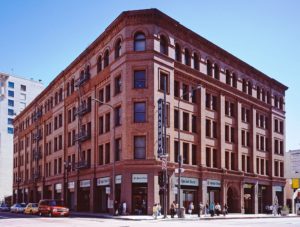The Historic Monument of Pueblo de Los Ángeles, also known as the Historic District of Plaza de Los Ángeles, is an area that encompasses the oldest section of the city of Los Angeles, known for many years as El Pueblo de Nuestra Señora la Reina de los Ángeles del Río de Porciúncula. The district, centered around the old plaza, was the city’s hub under Spanish (1781-1821), Mexican (1821-1847), and American (after 1847) rule for most of the 19th century. The 44-acre park area was designated a state historic monument in 1953 and listed on the National Register of Historic Places in 1972.
A plaque in front of Plaza Vieja commemorates the city’s foundation. This plaque reads: “On September 4, 1781, eleven settler families (44 individuals including children) arrived at this location from the Gulf of California to establish a town that would become the City of Los Angeles. This colonization ordered by King Carlos III was carried out under the direction of Governor Felipe de Neve.” The small town was named El Pueblo de Nuestra Señora Reina de los Ángeles sobre El Río Porciúncula.
The original pueblo was built southeast of the current plaza along the Los Angeles River. In 1815, a flood swept away the original town, and it was rebuilt farther from the river at the site of the current plaza. During its first 70 years, the pueblo grew slowly, going from the original 44 inhabitants in 1781 to 1,615 in 1850, averaging about 25 people per year. During this period, the Historic District of the Plaza was the commercial and social center of the pueblo.
In 1850, shortly after California became part of the United States, Los Angeles was incorporated as a city, experiencing a major boom in the 1880s and 1890s as its population grew from 11,200 in 1880 to 50,400 in 1890 and 102,500 in 1900. As the city expanded, the commercial and cultural center began to shift southward, away from the Plaza, along Spring Street and Main Street.

In 1891, the Los Angeles Times already reported on the inevitable shift of the city center:
“The geographical center of Los Angeles is the old plaza, but it long ceased to be the center of the population. … While at one time most of the population was north of the plaza, in the last ten years, 90% of the improvements have gone into the southern half of the city. … These are solid facts that it is useless to try to ignore by playing ostrich, and the sensible property owners of the northern section of the city are beginning seriously to ask what is to be done to check or at least retard the steady march of the business section from the old to the new plaza on Sixth Street…”
The 44 acres (180 square meters) surrounding the Plaza and constituting the old pueblo have been preserved as a historical park bounded approximately by Spring, Macy, Alameda, and Arcadia streets, and Cesar Chavez Boulevard. There is a visitor center at the Sepulveda House. A volunteer organization known as Las Angelitas del Pueblo offers tours of the district.
The district includes the city’s oldest historical structures grouped around the old plaza. Buildings of historical significance include Our Lady of the Angels Church (1822), Avila Adobe (1818) (the city’s oldest surviving residence), Olvera Street Market, Casa del Pico (1870), and Old Plaza Firehouse (1884). Four of these buildings have been restored and operate as museums. Archaeological excavations in the Pueblo have uncovered numerous artifacts from the long Indigenous period before European contact and colonization. These include animal bones, domestic items, tools, bottles, and ceramics.
The district was designated a state monument in 1953 and listed on the National Register of Historic Places in 1972. However, this did not prevent the demolition over successive decades of numerous very old historic buildings, especially those that once formed the eastern edge of the Plaza.
The Plaza
At the center of the Historic District is the Plaza. It was described in 1982 as “the focal point” of the state historic park, symbolizing the birthplace of the city and “separating the tourist bustle of Olvera Street from the vacant buildings of the Pico-Garnier block. Built in the 1820s, the plaza was the commercial and social center of the city. It remains the site of many festivals and celebrations. The plaza has large statues of three significant figures in the city’s history: King Carlos III of Spain, the monarch who ordered the founding of the Pueblo de Los Angeles in 1780; Felipe de Neve, the Spanish governor of the Californias who selected the Pueblo site and laid out the city; and Junipero Serra, founder and first head of the missions of Alta California. Additionally, the plaza is dedicated to commemorating Los Pobladores, the forty-four original settlers and the four soldiers who accompanied them. A large plaque with their names was erected in the plaza, and later, plaques dedicated to each of the eleven families were placed in the ground surrounding the gazebo in the
center of the plaza.
Olvera Street
Facing Union Station, Olvera Street, known for its Mexican market, was originally called Wine Street. In 1877, it was widened and renamed in honor of Agustín Olvera, a prominent local judge. Many of the historic buildings contributing to the Plaza District, including the Avila Adobe and Sepulveda House, are located on Olvera Street. In 1930, it was adapted by local merchants into the colorful and lively market that operates today. Its style is similar to the plazas of Sonora, Mexico.
The America Tropical mural (whose full name is “America Tropical: Oppressed and Destroyed by Imperialism”) by David Siqueiros, was unveiled over the street in 1932. It was soon covered to mask its political content. The Getty Conservation Institute undertook detailed conservation work on the mural to restore it.



